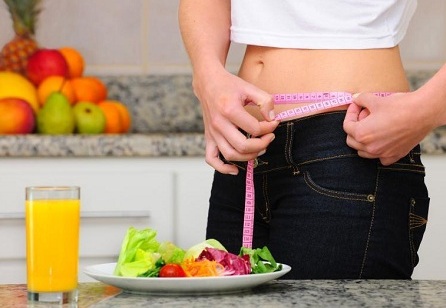Weight loss is achieved through eating fewer calories than you burn. The calories you burn are determined by your weight, gender, age, body composition and level of physical exercise. However, irrespective of body type and physical activity, 1000 calories a day is very low and is not recommended for lengthy periods of time. It’s best to be used short-term to kick-start weight loss.

Is Eating 1000 Calories a Day Healthy?
Moderately active women should eat 1800-2200 calories a day; men should eat 2200-2800 calories. Physically active females need to consume 2400 calories and males need 3200 calories. Very low-calorie diets should only be undertaken under supervision, as they increase the risk of gallstones and cardiac issues. You can achieve rapid weight loss on less than 1200 calories, but it’s not recommended and may make you lethargic and unable to exercise. Not only does this impede long-term weight loss, it can also cause muscle loss and metabolic sluggishness.
Who Should Use a 1000-Calorie Diet Plan?
Medically supervised weight loss programs involving eating 1000 calories a day may be suitable for those who are obese or have certain health issues, such as hypertension or high cholesterol. However, take medical advice before embarking on the regime to see if it’s appropriate for you.
Eating 1000 calories a day is usually not necessary for weight loss. Moreover, this diet is not suitable for pregnant or breastfeeding women, or for children.
How to Safely Achieve Eating 1000 Calories a Day
1. Speak to a Medical Professional
Ask your doctor to see whether severely restricting calories is right for you. He or she will take your BMI and ask what weight loss techniques you’ve tried before. You should not undertake a 1000-calorie a day diet if you have particular health conditions, such as epilepsy or an eating disorder.
2. Go for Nutrient-Rich Foods
When eating 1000 calories a day, ensure you get all your essential dietary nutrients. Natural and whole foods are the best. So choose lean meat, dairy, nuts, seeds, whole-grain cereals, plenty of fruit and vegetables.
3. Cut out Junk Food
Getting adequate nutrients in the 1000 calorie-a-day diet means there is no space for the empty calories in sugars, alcohol and processed food. Consume lean proteins, whole grains and fresh food in each meal.
4. Keep up Your Energy Levels
Divide your calorie rations into five meals of 200 calories each to get a constant source of energy from your food. Don’t eliminate any food groups, e.g. fats or carbohydrates, as you need a complete mixture of all the different macronutrients for optimum health.
5. Limit Exercise
If you are on such a restricted diet, you’ll need to limit your physical activity. Insufficient nutrition can cause fatigue which increases susceptibility to injury.
1000-Calorie Diet Sample Menu
If you are eating 1000 calories a day, you’ll need a balance of nutrients as well as plenty of water. Remember, this diet is only suitable for short periods. Below is a sample menu with the approximate calories in each food in brackets.
Breakfast
- 1 cup fruit (74)
- 1 whole wheat English muffin (120)
- 1 pat butter (36)
- 1 cup tea or coffee (0)
Lunch
- 1 large tossed salad plus 2 tablespoons dressing (100)
- ½ cup tuna with 5 ounces light mayonnaise (135)
- 1 cup low-fat thin wheat crackers (130)
- 12 ounces diet soft drink (0)
Dinner
- 1 small tossed salad with 2 tablespoons dressing (61)
- 1 cup green beans (44)
- 4 ounces grilled skinless chicken breast (189)
- 1 pat butter (36)
Common Questions About Calories and Dieting
Q1: How many calories should I cut out for weight loss?
Calculate the calories in your current diet by recording the calories in each meal over three days. Count the total calories, then divide by three to get your average daily calories. Now try cutting out 100 calories of food and add 100 calories worth of exercise daily. This will help you lose around two pounds a month.
Q2: How do I calculate the number of calories in unlabeled food, such as fruit and vegetables?
Many calorie-counting guides are available in book stores. Alternatively, there is free information on the internet. Try the nutrient database at www.nal.usda.gov/fnic/foodcomp/search/. Look up the foods you eat and soon you’ll be able to accurately estimate the calories in each meal.
Q3: Can no-calorie food help me to lose weight?
In theory, choosing no-calorie food cuts calories and leads to weight loss. However, people who opt for low-calorie, low-fat or low-sugar foods often overindulge later. Use low-calorie food together with other proven techniques, such as smaller portion sizes, eating lots of fiber, fruit and vegetables.
